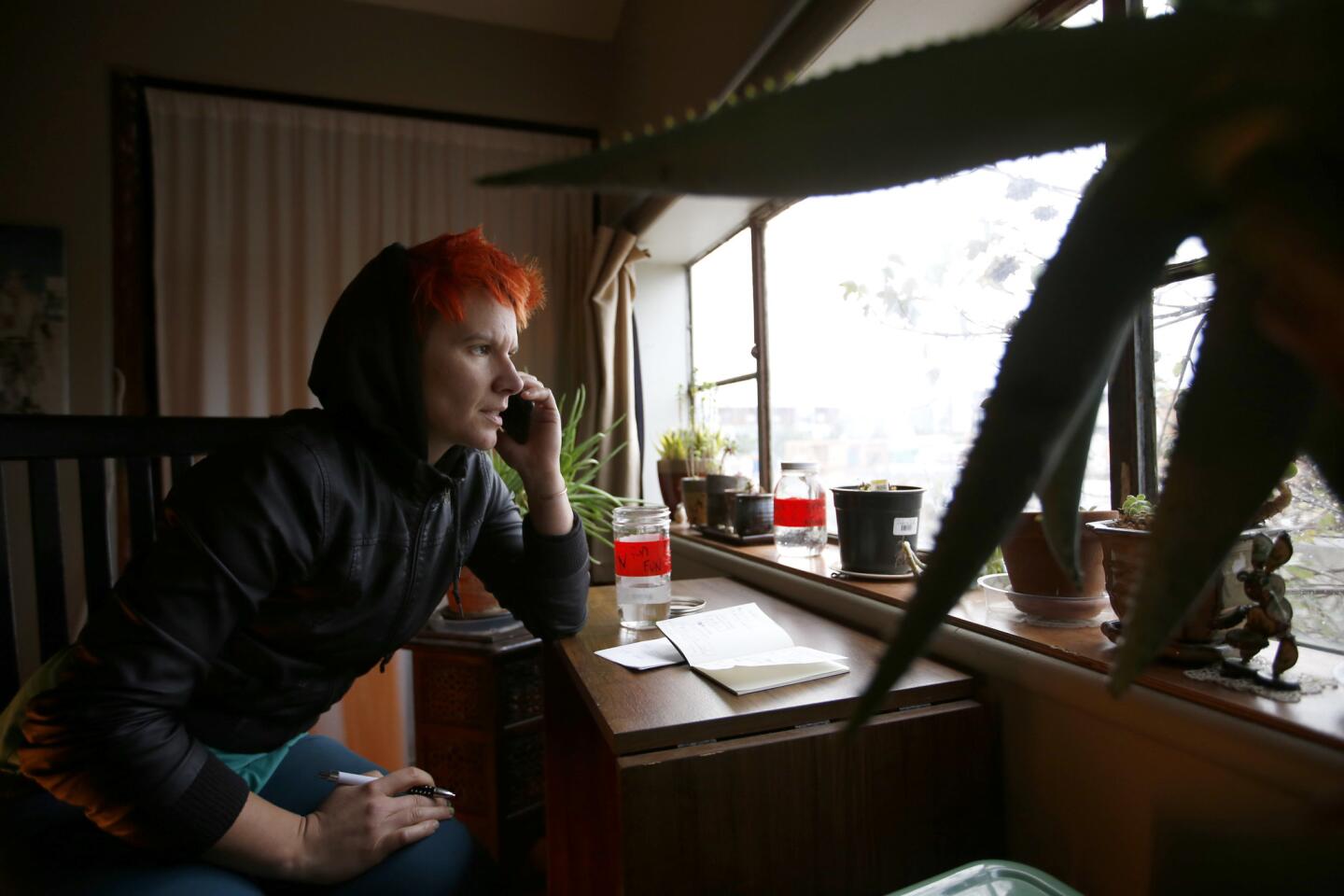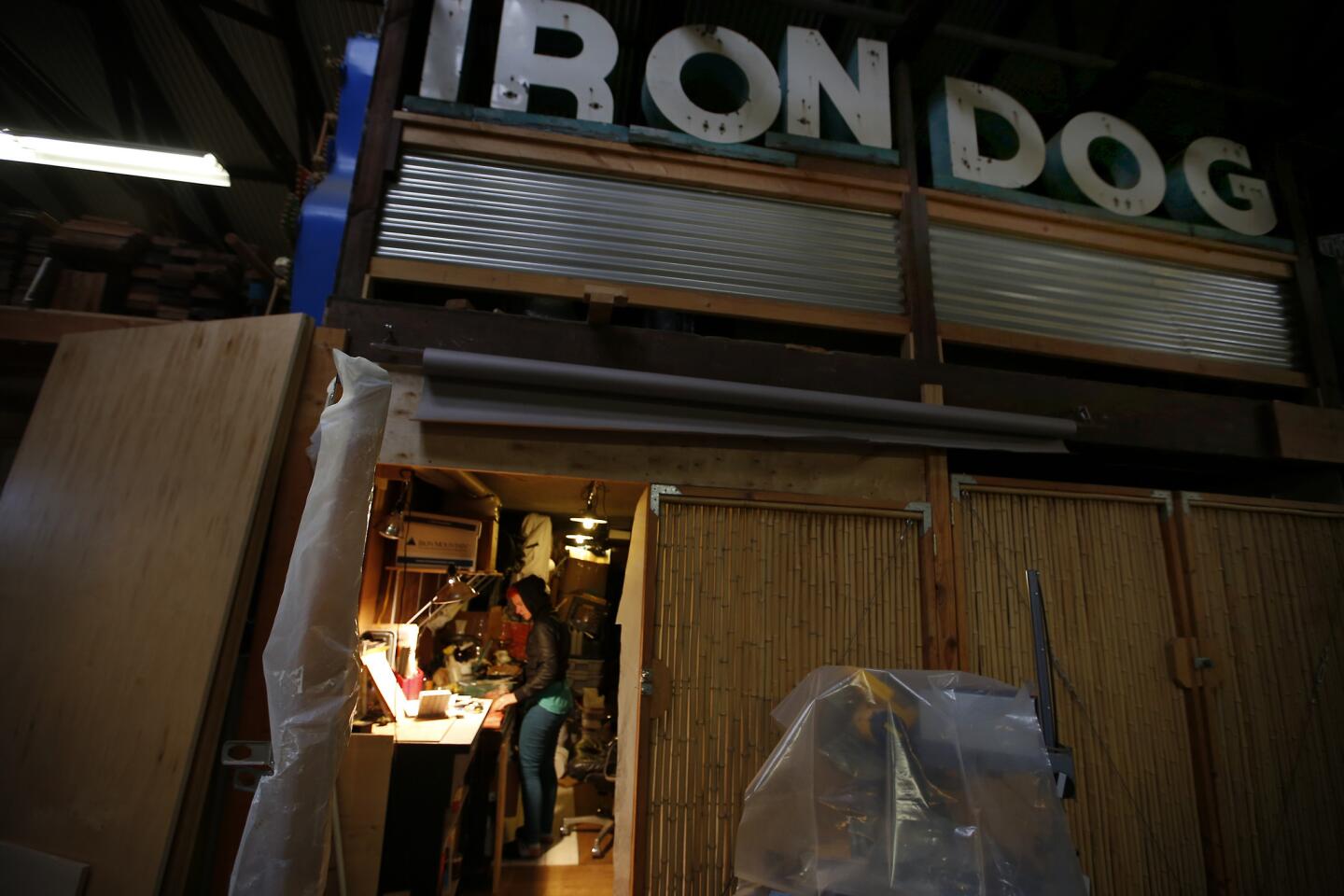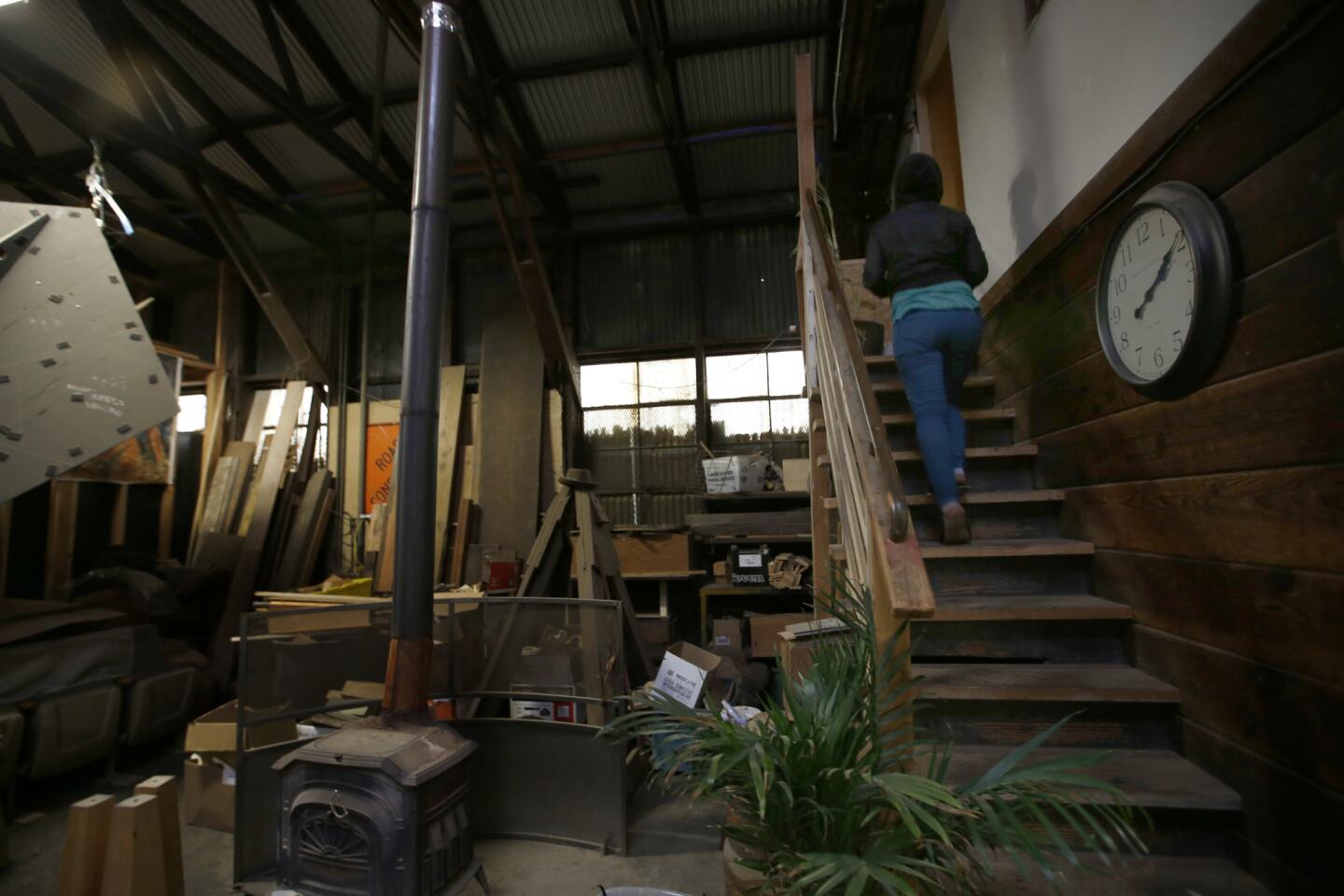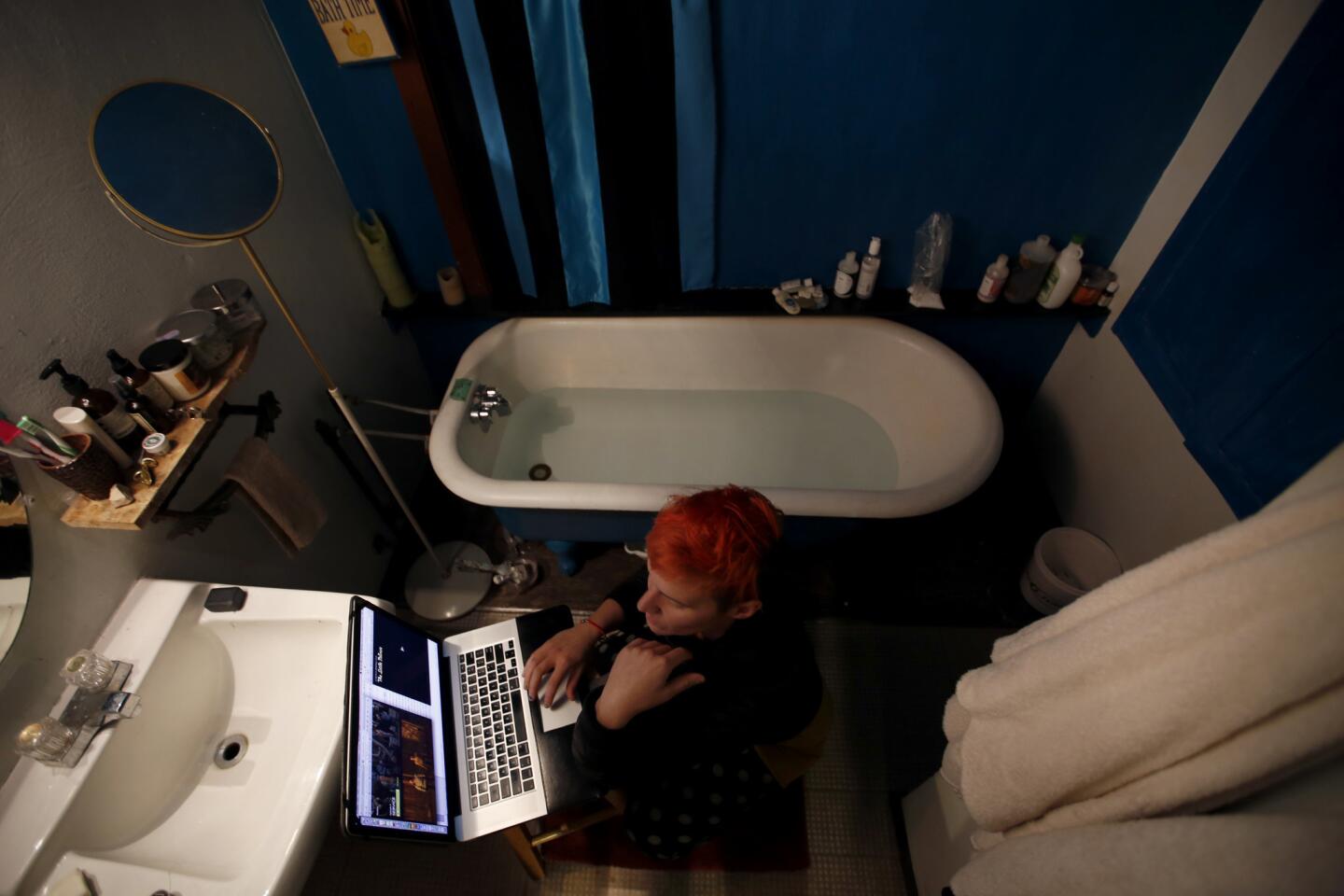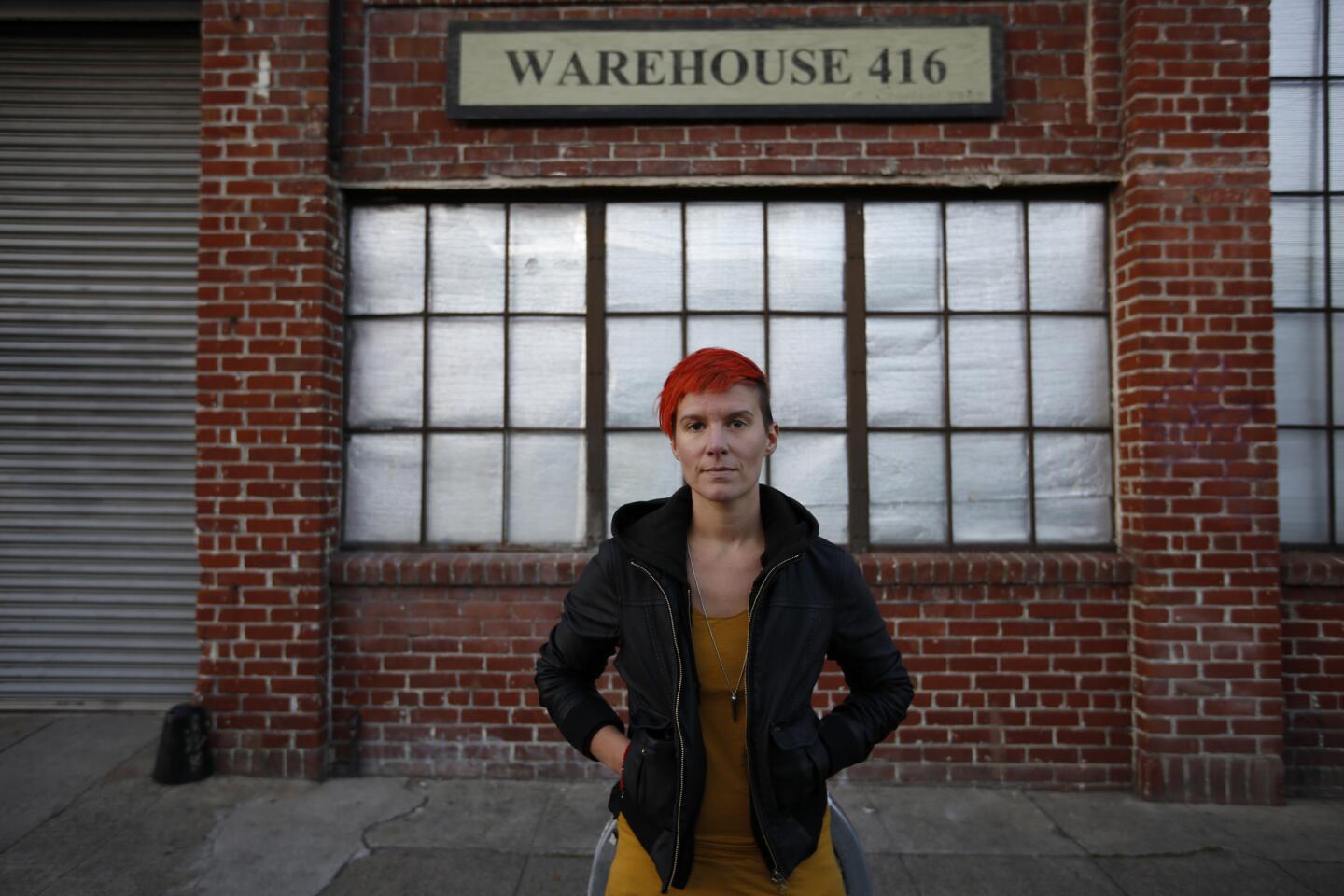They live ‘in the shadows’ like the Oakland warehouse. Now, they fear a witch hunt for homes like theirs
- Share via
Reporting from Oakland — As Oakland’s tightknit arts community continues to grapple with dozens of deaths in the Ghost Ship warehouse blaze, it is also being roiled by heightened scrutiny over the safety of similar living spaces.
Many Bay Area artists live in warehouses and other unconventional spaces, often skirting zoning laws while those who collect rent turn a blind eye. But as the fire draws attention to these homes, some residents are facing eviction and expressing concern about newly aggressive enforcement that some call a “witch hunt.”
Angela Scrivani said her property manager told her Wednesday that she has less than a month to move out of the West Oakland warehouse where she has lived for nearly 10 years. The space is not zoned as a residence, she said, and her landlord doesn’t want anyone living there anymore.
“We’ve been in the shadows for a long time for a reason ... and it worked really great for a lot of people for a long time until this one incident,” said Scrivani, a photographer who also produces art shows. “Right now the spotlight is on us.”
Since the fire, tension among property owners, the city and people who live in these spaces has begun to boil over.
On Wednesday, Dorothy King invited TV news crews to her barbecue restaurant near the Oakland waterfront for a news conference. She claimed that a neighboring warehouse is a fire hazard, though no complaints have been filed against the building, according to city records.
King acknowledged that she had not been in the space in five years and had not spoken with the artists who live or work there, touching off a shouting match with a group of artists who said they were blindsided by the public accusations.
B.G. Anaraki, an artist close to some of the Ghost Ship fire’s victims, said King was “capitalizing on a tragedy to get media attention” by calling out the warehouse in front of TV cameras instead of talking to tenants one-on-one.
King’s daughter Nina Moore said, “I’d rather be a snitch and save lives than be quiet as a mouse.”
Sam Lefebvre, a music journalist who has been covering the fire for the weekly East Bay Express newspaper and who lost friends in the blaze, held back tears as he defended the warehouse targeted by King. Lefebvre, who is a tenant in the building, said it has two exits as well as a fire escape.
In an interview the next day, Lefebvre said residents of the warehouse, which doubles as a music studio, have spoken privately with King and begun to resolve their problems.
Still, he said, there is widespread fear among artists that they will be ousted from their homes.
The anxiety extends beyond what the government or landlords might do: One post on an online message board encouraged people to report illegal spaces. Artists have begun to scrub the Internet clean of information listing the location of their spaces.
Lefebvre said warehouses “are important because for people who may inhabit nonconforming bodies or who are queer or who are in some way an affront to mainstream society — all those people can congregate there, and they can do so in a safe environment.”
Just three days after the fire, Hunter Savoy Jaffe, who said she was friends with at least three of the Ghost Ship victims, warned the artist community to fight to protect itself. “This world was not built for us,” she said at a vigil for those lost. “They will denounce the way that we live, and they will dehumanize our passing and the shutting down of our spaces.”
Emotions surfaced Thursday night in a church next door to the now-gutted warehouse known as 1919 Market, which has become a cause celebre in Oakland’s artistic community. The city red-tagged the building for major safety hazards in January, giving residents 72 hours to leave.

Real estate developer Danny Haber speaks at a contentious community meeting at the Greater St. John Missionary Baptist Church, left, next to the 1919 Market Street warehouse, in West Oakland on Dec. 8. The meeting was meant to inform the community a
San Francisco developer Danny Haber, who controls the property, met in the church with former residents to discuss his plans for the site. He displayed architectural drawings of the clean, well-lighted, safe place he seeks to build “to re-create the intent” of the former illegal conversion, but he was shouted down and branded an “interloper.”
When Haber sought to point out that the old 1919 Market was a fire trap, he was screamed at. “Don’t you dare! You will not disregard the lives that were lost this week and use it for your agenda!” members of the audience shouted.
Meanwhile, in neighboring Richmond, Mayor Tom Butt said last week that city officials will inspect what he called an unlicensed concert venue at a warehouse and could seek warrants to enter if the property owner doesn’t let them in.
Across the country in Baltimore, officials evicted the residents of the Bell Foundry, a converted warehouse, for possible safety violations. The mayor said she didn’t want a repeat of the Ghost Ship fire.
Converted warehouses are not always ideal places to live, but they offer a cheap alternative to pricey apartments in the booming Bay Area, residents say, and they’re often a place where minorities and people who feel they’re on the outskirts can find a sense of belonging.
“We take care of each other in our unsafe spaces that can feel so much safer than your safest spaces,” wrote singer-songwriter Kimya Dawson in a widely shared Facebook post about the Oakland fire. “We’re not trying to put each other in danger. We are trying to save each other’s lives.”
Oakland Mayor Libby Schaaf said last week she will create a task force to enhance fire and building code enforcement, including increasing fire inspections, smoke alarm requirements, permitting of events and monitoring of illegal events.
“We need to do all of this while protecting our artists and creative workers in this great city by ensuring that they and all Oaklanders have affordable work and housing space,” she told reporters.
John Burris, a prominent Oakland civil rights attorney who negotiated a settlement that placed the Oakland Police Department under federal oversight in 2003, said he met Thursday with a half dozen people who live in warehouses, including some who said they have been threatened with eviction since the fire.
“We talked about developing some kind of relationship with the city to make sure that their places are safe without driving them out of the community,” he said.
Kelley Keogh, an environmental health and safety auditor from Santa Rosa, has been offering free safety consultations to people who live in do-it-yourself spaces since the fire and has received 20 calls so far.
She hasn’t found much to change. Most residents have already taken precautions to live safely, even if not legally, she said.
“The places I’ve seen so far are beautiful, they’re safe,” she said. “The Oakland fire was a bad mixture of bad planning and people that were not paying attention, and the folks I’m talking to are not like that.”
The extra caution is evident in San Francisco too, where Nathan Holguin’s building manager called a meeting to discuss fire safety at the warehouse where he’s lived for three years.
The building is zoned for art studios, but people have lived there for about 10 years, he said. Nineteen people currently live there.
Holguin, a circus and theater performer and technician, called it a perfect living situation because it has a dance floor where he can practice without having to rent studio space.
But such live-work spaces are increasingly hard to find, he said, adding, “There’s not a lot of people crying about the artists being gone in San Francisco.”

Some members of Oakland’s art community face eviction, with some saying aggressive enforcement is turning into a “witch hunt.”
soumya.karlamangla@latimes.com
ALSO
‘We’re all hurting’: Mourners gather at Oakland museum to remember victims of Ghost Ship fire
Oakland Ghost Ship fire’s victims memorialized
Amid Ghost Ship’s enchanting disorder lurked danger and the seeds of disaster
More to Read
Sign up for Essential California
The most important California stories and recommendations in your inbox every morning.
You may occasionally receive promotional content from the Los Angeles Times.
